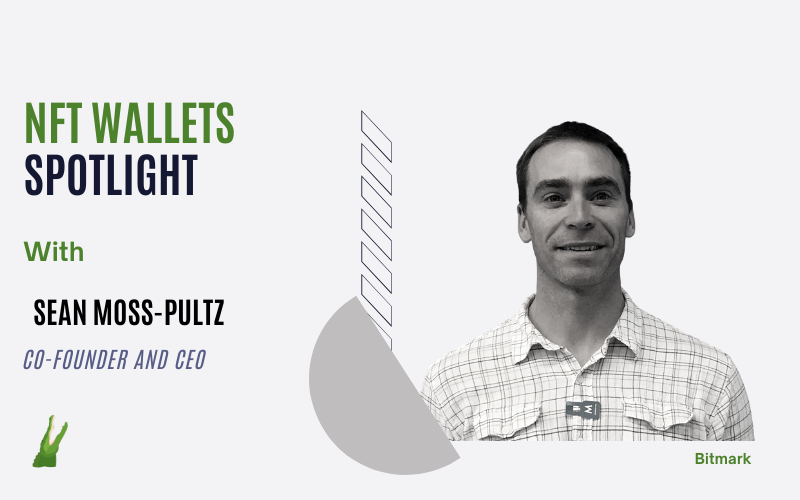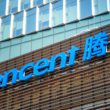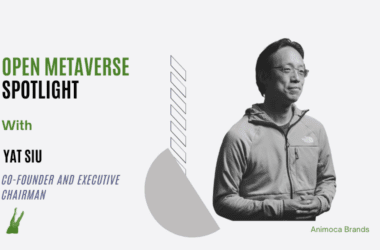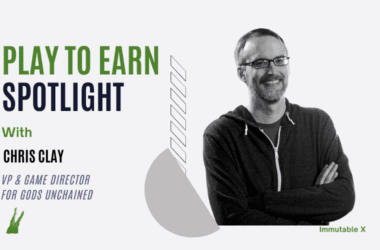A growing number of NFT wallets are starting to hit the market as more people collect NFT art. Having a secure, non-custodial NFT wallet is an important part of the NFT investment process as the wallet will safely store digital assets and make NFT transfers simple.
Major cryptocurrency exchanges that have launched NFT marketplaces have also released wallets that can store both crypto and NFTs, while other independent wallets that start out only for cryptocurrency now also support NFTs. To stand out from the rest, each wallet offers a suite of different functions such as multi-chain support, hardware wallet support, browser extensions, and seamless connection to NFT marketplaces.
Last week, blockchain startup, Bitmark, launched its own dedicated NFT wallet named Autonomy. Unlike most wallets out there that store both crypto and NFTs, Autonomy only stores NFTs and displays them in a grid-like feed similar to Instagram. Autonomy claims to be “the world’s first and only digital art wallet” that allows users to showcase their NFT collection and view it on any screen, TV or projector, anywhere.
Following the launch of Autonomy and Bitmark’s $5.6 million fundraise, we speak to co-founder and CEO Sean Moss-Pultz to find out more about the idea behind the wallet and what it has in store for users.
Please tell us about yourself and the story behind your role at Bitmark.
I’m the co-founder and CEO of Bitmark. I’m a software person that loves creating tools that empower humans. Prior to Bitmark, I started an open-source hardware company. That taught me the hard way I should stick with software.
I first got excited about Bitcoin when I understood how it could lead to a better society. Financial institutions require accountants, lawyers, regulators, and police. This increases bureaucracy, risk, and stress to society. Regulation can be captured. In short, our existing institutions are expensive to scale.
The breakthrough idea behind Bitcoin is that trust can be built through excess computing resources. We can use code to implement data integrity and do it at an ever decreasing cost-structure (computing costs follow Moore’s law). To put things another way: computer science can now secure value far better than people.
What piqued your interest in the NFT space and where did you first hear about it?
NFTs are to property what Bitcoin is to money. At first glance, it’s laughably inferior. Go deep into public blockchains and the potential is clear: these are new building blocks for a radically better society. Bitmark has been working on digital property since 2016. Around 2018 the name “NFTs” started to stick. Instead of fighting that, we just went with it. Property is by definition “non-fungible”.
Why did Bitmark launch its own NFT wallet?
Because no one else is doing this. Every existing crypto wallet is built for tokens and DeFi. The world needs a better way to collect, view and discover digital art.
Could you please elaborate on Autonomy’s interoperability?
I’m not sure if interoperability is the right phrase here. NFTs are open and programmable so you get interoperability for free. Our focus is on providing one simple experience for people to collect art across Ethereum, Tezos and any new chain that emerges. Our goal is to free people from the chaos and complexity of the underlying blockchains to allow them to easily collect, view, and discover digital art they love.
Besides the ability to display digital art, what sets Autonomy apart from other wallets that also support NFTs on multiple blockchains?
I’m not aware of other wallets that allow people to enjoy their digital art anywhere.
Besides Tezos and Ethereum, what other blockchains will Autonomy integrate with in the future and when?
We prioritize based on the artists – where they go first, we know good stuff will follow. But honestly, if people are excited about collecting NFTs on any chain that will be on our roadmap.
Why did you decide to make Autonomy’s code open-source?
As I mentioned in the beginning, before starting Bitmark, I led a team that created the world’s first open-source phone – Openmoko. It might be hard to remember but, before the iPhone and Android, the mobile ecosystem looked nothing like the Internet.
Handset makers shipped shitty software that could not be updated. Carriers had absolute control over what could be on their networks. Together they crushed any innovation that could put their business model at risk. This is why instead of WhatsApp we got crap like WAP. It was an Orwellian world where individuals could not own anything about their phones.
Openmoko‘s mission was to “Free your phone”. We used open-source software and a passionate community of amateurs to drive a wedge into those gatekeepers. Openmoko was not financially successful, but we were recognized as the precursor to iPhone and Android. We left the first dent. Autonomy is my next swing.
How else will Bitmark and Autonomy expand their reach in the NFT space?
We have a lot of things in the pipeline related to more responsible key management. To date, people really only have two options: 1) Give all of the keys underlying your crypto + NFTs to a third party; or 2) Take full responsibility for personally holding those keys yourself. Both of these approaches have flaws.
The ideal solution to this problem is, for lack of a better phrase, a “collaborative custody”. Spread out the responsibility of protecting the keys underlying digital assets among a variety of parties, each inspired by self-interest, their business models, or a desire to protect the assets themself. As long as no one party ever has access to all the key material, single points of failure and single points of compromise are removed.
What do you think about the current state of the NFT market? What kind of role is Bitmark/Autonomy playing in it?
Now is the most exciting time to build. The noise is low and the art keeps getting better.
We’re working with Blockchain Commons, a not-for-profit organization focused on securing open architecture. Christopher is the founder and Executive Director of Blockchain Commons and the co-author of the TLS standard that protects every secure transaction on the Internet, including shopping purchases and electronic banking. Christopher has also been the leading advocate for SSI, an identity model that ensures people are always in control of their digital assets. That idea is baked into Autonomy, as is reflected in the name.
What can users look forward to from Bitmark and Autonomy this year?
We’re working on functionality to help users discover new art by knowing the artists they collect, what they’ve minted and what they’ve bought for themselves. We don’t use likes, trends or algorithms. We go straight to the source to give them the stuff we know they’ll love.
What are the most challenging aspects of your role at Bitmark and how do you overcome these challenges?
Right now I see my main role as helping to focus the company on the massive opportunity in front of us. Focus means saying no to tons of things. That is always difficult for me. Instead, I try to think about doing “less but better”.
Where do you think we could see NFTs in the near future?
I really think we will see incredible experimentation around music NFTs by year-end. This really seems like the ideal distribution model for all creative works. Music is uniquely broken so I expect musicians to get really excited when they understand what this new technology can enable.
Stay up to date:





